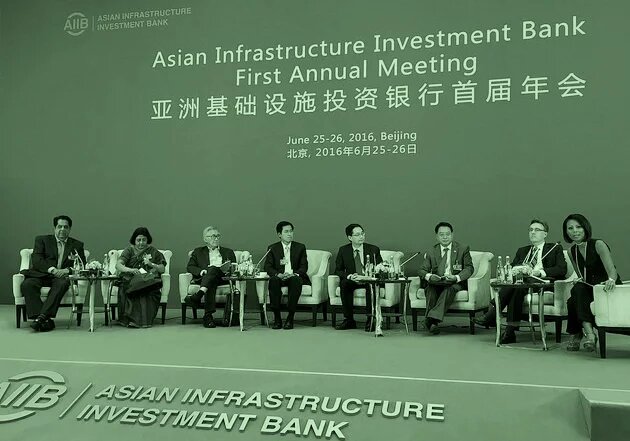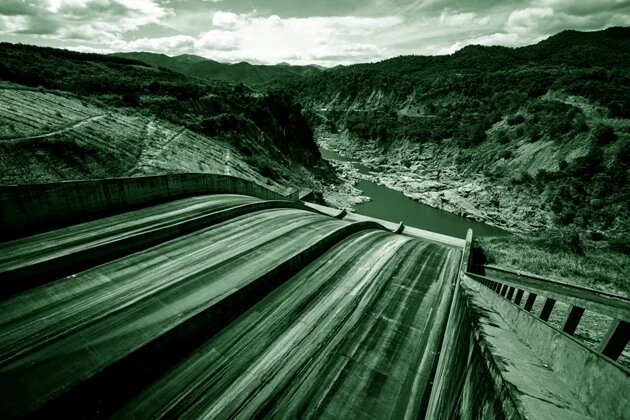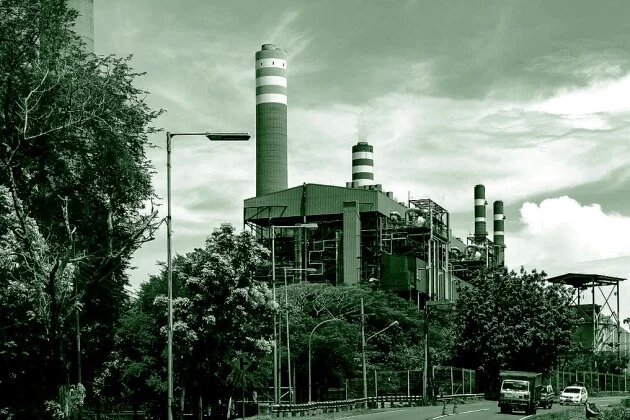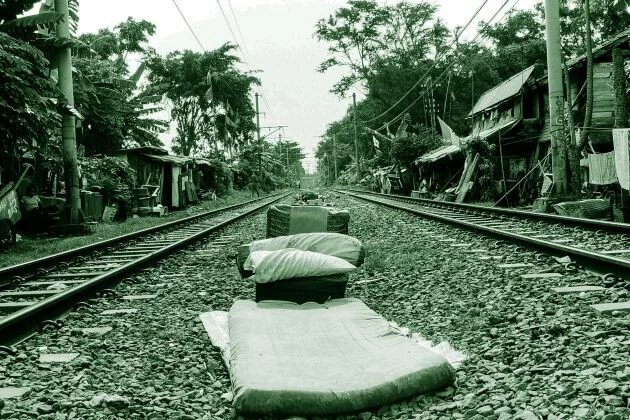

A decade after former US Deputy Secretary of State Robert Zoellick urged China to become a “responsible stakeholder” (Zoellick 2005) in the international system, China started its so far biggest multilateral initiative, the Asian Infrastructure Investment Bank (AIIB). Early this year the bank opened for business and started to approve its first projects in Central, South and Southeast Asia. For the Chinese government, the AIIB will be a litmus test for its international reputation. Frustration with existing governance structures in international development finance as well as a dire need for infrastructure investment in the region have been major drivers behind the initiative.
In the run-up to its opening, the bank has drawn a lot of criticism, especially from the US and Japan but also from social and environmental NGOs. The article provides insights on recent developments in the bank’s structure, policy, and planned investments as well as a first assessment of this criticism. Will the AIIB be a threat to existing multilateral development banks (MDB) such as the Asian Development Bank (ADB) and the World Bank? Will the bank undermine social and environmental standards? Can the AIIB live up to its self-proclaimed goal to be “lean, clean, and green”?
Western critique of China’s development cooperation
Since the turn of the millennium China, as part of it ‘going-out’-strategy, invests in overseas infrastructure projects with the goal of connecting its more remote Western regions of Tibet, Xinjiang, and Yunnan to markets in Central and Southeast Asia. The measures to tackle national regional disparities recently culminated in the One Belt, One Road (OBOR) initiative that aims to revive the ancient overland and maritime Silk Road between Asia and Europe. China had long been a proponent of the idea to (re-)focus development cooperation more closely on infrastructure investment. Over the last decade, the country largely followed a bilateral approach to development cooperation which in turn allowed it to set the terms of cooperation. Western donors frequently criticize Chinese aid for being non-compliant with OECD standards for Official Development Assistance (ODA). Moreover, social and environmental standards have taken a back seat in the bilateral approach. China has been the largest source of public funding for coal-fired energy plants, especially sub-critical, low-efficiency ones (Ueno, Yanagi, and Nakano 2014). Other contentious projects such as the Myitsone dam in Myanmar only came to a halt after heavy protests by local communities.
The critique voiced by Western governments, though correct on the issue itself, needs to be viewed with caution. Geo-strategic animosities over regional preponderance, in particular between China, Japan and the US, resonate with this criticism. Foreign aid has always been a means to achieve political ends. Chinese economic engagement of the region is therefore often judged by its meaning for the regional balance of power. It is in this context, that the debate surrounding the establishment of the AIIB sometimes appears to resemble the declaration of a proxy war with the Japanese-led ADB and the US-led World Bank. This is particularly the case as the Chinese development model of economic liberalization cum authoritarianism is perceived as a threat to the already fragile democratization process in the region. While the political goal of bringing liberal democracy to the region is neither undesirable nor invalidates the criticism, it conceals the hypocrisy of the Western governments’ approach to China and other developing countries. More often than not, it was Asian governments’ discontent with Western donors and international organizations that opened up a space for China to step in, not vice versa.
The new kid in town is here to stay
On one hand, discontent is a matter of power. China and other Asian countries have long been ready to assume a larger role in global governance but incumbent powers frequently denied it greater say or at least delayed more significant change. That now 14 of the 57 signatory states of the AIIB are members of the European Union, including the heavy-weights Germany, United Kingdom and France, is therefore a particular diplomatic success for the Chinese government. The AIIB is the first major international financial institution where emerging economies will have a leading voice. Nine out of twelve members of the Board of Directors are from the region. Only at the top management level Western influence is slightly more pronounced. AIIB President and former Chinese vice minister of finance Jin Linqun will be assisted by five vice-presidents, two of them from Europe.
The choice of personnel also points to the significance China places on the bank’s success. Across the board, vacancies were filled with high-ranking professionals that display proven expertise in the area of development cooperation. South Korea sent its former chairman and chief executive of the Korea Development Bank Kyttack Hong. With D.J. Pandian and Luky Eko Wuryanto, India and Indonesia respectively appointed two individuals with several decades of experience in the civil service. German appointee Joachim von Amsberg previously occupied the role of vice-president of development finance at the World Bank. Most tellingly, China showed itself “unimpressed” at the nomination of UK politician Danny Alexander who apart from his former role as Chief Secretary of the Treasury has no experience in the field (Financial Times 2016).
To put things in perspective, the AIIB will indeed be a formidable player in its field. Its initial capital amounts to $100 billion compared with $160 billion of the ADB and $260 of the World Bank. Having a significant number of industrialized countries on board will further enable the AIIB to borrow money on international capital markets at favorable rates. Adding to that the approximately $50 billion financial fire power of the BRICS New Development Bank, $148 billion of the China Development Bank, and another $40 billion of the Silk Road Fund make clear that China is here to stay in the field of infrastructure investment (European Commission 2015).
Asia’s dire need for infrastructure investment
On the other hand, discontent is a matter of policy. Many developing countries perceive approval processes for MDG funding as overly cumbersome. The results of allegedly excessive risk-assessment would place a disproportionate administrative burden on recipient countries during the implementation phase. High environmental and social standards in particular are seen as unwelcome interference in many of the less than democratic polities. In practice, the main problem with well-intended environmental and social safeguard frameworks (ESF) that come attached with MDB funding is that their effectiveness is questionable. On-the-ground implementation is mostly left to local governments who have little interest and/or capacity to enforce them. Despite the formal application of ESFs, at least three million people were displaced as a result of World Bank projects in Asia alone, according to estimates by the International Consortium of Investigative Journalists (ICIJ 2016). At the same time developing countries feel that the recent OECD-led ban on MDB funding for coal-fired energy does not suit their needs for cheap energy supply despite their commitment to the Paris Agreement and the negative effects climate change has on them.
In 2011, consultant company McKinsey projected the investment gap to be as large as $8 trillion for the decade following the report of which almost one third is in transport and more than half in energy-related investments (Tahilyani, Tamhane, and Tan 2011). Rapid urbanization in many of Asia’s economic centers has been sprawling over the last decades and with it the need to provide basic services in areas that not long ago were largely uninhabited. Energy demand has been steadily on the rise for the last decades and over one fifth of the population of Southeast Asia still lacks access to electricity. Coal remains the cheapest source of energy and as such often is the first choice among developing countries. Southeast Asia’s three largest energy consumers, Indonesia, Thailand and Malaysia, have stated their intention to expand their use of coal. The large potential for hydropower is politically contentious as it often goes hand in hand with the loss of livelihood for local communities. Renewables, at least at market prices that do not discount for environmental costs, only recently became more competitive.
At the same time, private investment in large-scale infrastructure projects has dropped to near zero due to risk-adversity since the financial crisis (Campanella 2015). In Indonesia, for example, virtually no intended private public partnership in infrastructure development passed the stage of risk assessment in the past years (Zen 2016). In combination with creditor countries shying away from seeking the assistance of established MDBs, this has led to a situation where, despite cheap refinancing rates on global capital markets, the number of bankable projects remains drastically low. Unsurprisingly, the OBOR initiative and the AIIB receive wide appreciation among Asian countries. The AIIB’s pledge to be “lean, clean, and green” promises speedy lending with few strings attached. While the bank claims to realize this goal by not having a resident board, many observers are concerned that “lean” and “green” do not go well together and that the AIIB could set-off a competitive race to the bottom among MDBs with regard to their ESFs.
The AIIB’s Approach to Environmental and Social Standards
To date, little can be said with certainty about the AIIB’s ESF. All currently approved projects are realized in cooperation with other MDBs that provide the risk-assessment and ESF. The only issue that seems rather clear is the AIIB’s approach to coal energy. In its October 2016 issue note the bank states that it will not only provide funds to upgrade existing facilities in order to ensure the use of superior technology. It will also base its investment decisions on the recipient country’s circumstances which, for example, in coal-abundant Indonesia sounds like a clear “go” for new coal-fired energy plants. On other issues neither the progressive language used throughout official documents nor isolated shortcomings in relation to resettlements and forced evictions give much insight into the actual implementation process (IDI 2016). As explained above, the thorniest issue is that of domestic enforcement of the ESF. Here, the bank indeed seems to signal greater willingness to allow client countries to rely on their domestic ESFs in the first place, at least where deemed appropriate. To date, however, the vast majority of Asian countries have ESFs in place that are below World Bank standards (Thomas and de Ferrati 2015). Maybe most importantly, the AIIB’s claim to remain “lean” might indicate that, unlike other MDBs, the bank does not intend to provide policy loans and reform assistance. These, however, are the main tool at MDB’s disposal to cope with the problem of domestic enforcement.
Approved Projects: Preliminary Evidence from Indonesia
To little surprise, in the list of approved projects transportation and energy-related investments figure prominently. Highway projects in Pakistan and Tajikistan fit neatly into the OBOR picture. Energy-related projects were approved for a gas plant in Myanmar and upgrades of a hydropower facility in Pakistan as well as the energy distribution network in Bangladesh. Several of the issues discussed above can be illustrated by taking a closer look at recently approved the National Slum Upgrading Project (NSUP) in Indonesia. The role of the AIIB here is confined to that of a mere co-financier, with risk-assessment and safeguards being provided by the World Bank. AIIB and World Bank each provide 12.5% of the funding. The bank’s involvement followed a government request after the World Bank had signalled that it lacked the necessary funds. The community-based NSUP has a precursor in the government’s Program Nasional Pemberdayaan Masyarakat Mandiri (PNPM Mandiri) and Kampung Improvement Project (KIP) but is much more ambitious in scale. The program supports the Government of Indonesia's ambitious goal to alleviate slums in the country by 2020, as well as bring universal water and sanitation access (popularly known as target 100-0-100). The project will support upgrading of slums across 6,400 sub-districts (kelurahans) in 154 cities. Although the majority of areas that are considered slums are on formal land title, the program's reach extends to areas without formal land tenure too. While targeting informal settlements generally is a large improvement as these communities are among the most vulnerable and previously excluded by government programs for the reason, it is not without risks.
The official line is to define project strategy, design and implementation including the thorny issues of compensation, eviction, and resettlement between cities and local communities themselves. In contrast to formal settlements that were already targeted and prepared under PNPM Mandiri, informal settlements have had no consultation process so far with government-sponsored facilitators in place. The very short time-frame (2016-2022) and immense scale, put into doubt whether the often complicated community deliberations will not end in top-down government decisions. The World Bank is therefore supporting the Indonesian government on a land tenure policy reform as the Indonesian government does not yet own land tenure security tools to help guarantee families will remain on or near the same land they currently reside. Funds for acquisition and donation of land are not foreseen as part of the project. Overall, while NSUP runs the potential of being the largest community driven slum upgrading program in the world improving the livelihoods of millions of people, it also runs a risk of becoming the largest eviction program of the country unless certain issues are attended to, says an undisclosed source at World Bank.
Outlook
At this stage many questions regarding the AIIB necessarily remain open. From the perspective of international power relations the AIIB looks like the legitimate price Western powers pay for the missed opportunity to properly embed China in the liberal world order. Its potential policy implications, however, are more problematic although most of the details known about the AIIB are a clear improvement to former bilateral development aid. It will be crucial that the initial cooperation with other MDBs encourages the AIIB to further develop its ESF and not to a dilution of standards. The World Bank is currently undergoing a review of its ESF (with so far questionable results) and the ADB will follow suit in 2019 (Horta 2016). In case the AIIB indeed takes a more hands-off approach to lending in terms of monitoring and policy reform assistance, the risks associated with Infrastructure investment could rise significantly as the example of the NSUP illustrates. A less interventionist approach must not be a carte blanche for poor domestic ESF enforcement. As infrastructure investment volume in Asia grows, civil society will be in high demand to closely monitor the banks’ activities so that social and environmental standards are attended to.
References
Campanella, Miriam L. 2015. “The AIIB Will Help Fill the Infrastructure Finance Gap.” East Asia Forum. April 9. http://www.eastasiaforum.org/2015/04/09/the-aiib-will-fill-the-infrastr….
European Commission. 2015. “The Asian Infrastructure Investment Bank.” Strategic Note Issue 1. https://ec.europa.eu/epsc/publications/strategic-notes/asian-infrastruc….
Financial Times. 2016. “Beijing ‘unimpressed’ by Danny Alexander’s Nomination for Asian Infrastructure Investment Bank,” January 26. https://www.ft.com/content/ba605530-c44a-11e5-b3b1-7b2481276e45.
Horta, Corinna. 2016. “World Bank Must Not Dilute Environmental and Social Standards.” D+C Monthly E-Paper, March, 17–19.
ICIJ. 2016. “Evicted and Abandoned: The World Bank’s Broken Promise to the Poor.” International Consortium of Investigative Journalists. Accessed November 2. https://www.icij.org/project/world-bank.
IDI. 2016. “Making Inroads: Chinese Infrastructure Investment in ASEAN and Beyond.” Ashville: Inclusive Development International. http://www.inclusivedevelopment.net/wp-content/uploads/2016/08/Making-I….
Tahilyani, Naveen, Toshan Tamhane, and Jessica Tan. 2011. “Asia’s $1 Trillion Infrastructure Opportunity.” |McKinsey & Company. March. http://www.mckinsey.com/industries/private-equity-and-principal-investo….
Thomas, Vinod, and David de Ferrati. 2015. “Time to Bolster Safeguards, Not Dilute Them.” Financial Times. http://blogs.ft.com/beyond-brics/2015/09/23/time-to-bolster-safeguards-….
Ueno, Takahiro, Miki Yanagi, and Jane Nakano. 2014. “Quantifying Chinese Public Financing for Foreign Coal Power Plants.” GrasPP Working Paper E-14-003. Tokyo: University of Tokyo. http://www.pp.u-tokyo.ac.jp/wp-content/uploads/2016/03/GraSPP-DP-E-14-0….
Zen, Fauziah. 2016. “Bridging the Gap: Financing Infrastructure Development in Emerging Economies,” August 8. http://www.eria.org/news/FY2016/08/bridging-the-gap-financing-infrastru….
Zoellick, Robert B. 2005. “Whither China: From Membership to Responsibility?” Remarks to the National Committee on the United States and China Relations. New York. http://www.disam.dsca.mil/pubs/INDEXES/Vol%2028_2/Zoellick.pdf.




